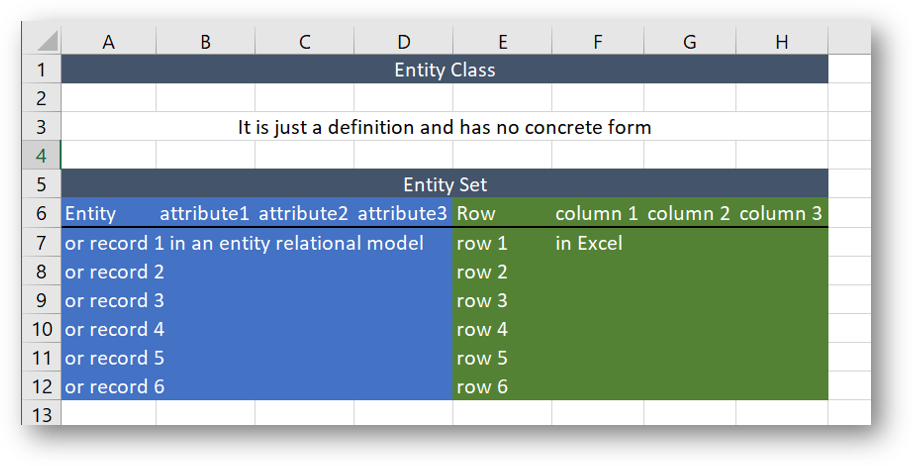
Tools for Information Literacy
Relational databases start with data modeling
What are the components of a relational database and
how do they compare with what we already know?
Relational Databases
Definitions
a database is a collection of related data
a database management system (or DBMS) is a system designed for two main purposes
- to add, delete, and update data in the database
- to provide various ways to view (on screen or in print) the data in the database
a flat file database is one where all the data is contained in a single table, such as in Excel
a relational database is one in which you can store information in different tables, each containing different information that relates to information in the other tables
comparing flat file databases to relational databases
relational databases components entity relationship model primary/foreign keys
back to top
So a relational database is characterized by
- multiple tables, perhaps maintained by multiple locations
- with relationships defined between the tables, so that the entire distributed, relational database works together
Why use a relational database design?
- to eliminate unnecessary redundancy or repetition in storage and in steps required for database maintenance
- to be able to distribute the database to multiple locations, each with a responsibility to maintain a part of the total database
relational databases components entity relationship model primary/foreign keys
back to top
Entity Relationship Model of a Database
an entity-relationship model (ERM) is an abstract and conceptual representation of data. Entity-relationship modeling is a database modeling method, used to produce a type of conceptual schema or semantic data model of a system, often a relational database, and its requirements in a top-down fashion. Diagrams created by this process are called entity-relationship diagrams (or ER diagrams)
One has choices in how to model the elements in a database. One of the standard textbooks on the topic (Elmasri, R., & Navathe, S. (2011). Fundamentals of database systems. Boston: Addison-Wesley.) offers a view of the several methods.
The purpose of a database is to store information about certain types of objects.
[let's use this example to discuss the topic]
To make the distinctions clear, we will use a color schema in which we use terms relevant to entity relationship models and their correlates in Excel
An entity class [like books] is an abstract definition of something
In Excel, there is no correlate as it is just a definition, not an example of a definition
- ERModel entity class
- [there is no correlate in Excel]
- an abstract definition of something
- [there is no correlate in Excel]
- [like "books"]
- [there is no correlate in Excel]
An entity set is the list of given entities within a given entity class that are currently in the database
In Excel, an entity set is a worksheet
- ERModel entity set
- Excel worksheets
- composed of entities
- composed of rows
- which have attributes
- which have column cells
an entity [like a textbook for INLS161] is a concrete example of that description
In Excel, an entity is a row
- ERModel entity
- Excel row
- a concrete example of that description
- a concrete example of what the table represents
An entity is composed of attributes
in Excel, attributes are columns
attributes/columns include information we want in the database
attributes/columns help to uniquely identify individual entities within a class
attributes/columns can describe relationships between entities in different classes

relational databases components entity relationship model primary/foreign keys
back to top
Primary and Foreign Keys
a Primary Key
is a set of attributes/column cells that uniquely identifies an entity/a row
a Foreign Key
is a copy of the Primary Key
of one entity/row
that appears as
an attribute/column cell
in another entity class/worksheet
and helps define the relationship between
entities/rows
in the two entity classes/worksheets
these keys link together the related entities/rows in a relational database/entity set
relational databases components entity relationship model primary/foreign keys